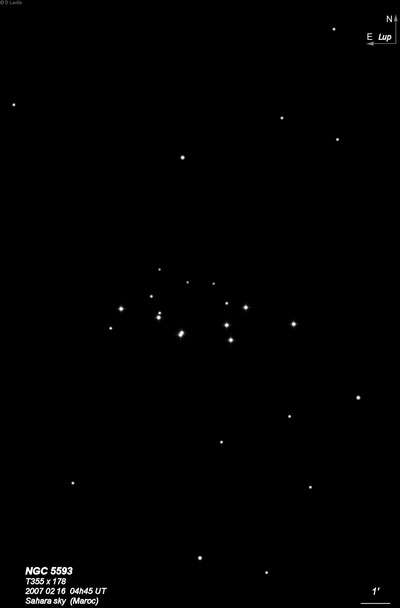
James Dunlop discovered NGC 5593 = D 350 = h3566 on 8 May 1826 and described "a curved line of small stars, south preceding a star of the 7th magnitude". Although his position is well off, the description applies though the star of 7th magnitude - not the cluster - is south-southwest.
John Herschel described NGC 5593 as "a poor, coarse, oblong cluster, which is the most condensed part of a rich region of stars 10m. Place of a double star [HJ 4675] in the following part."
400/500mm - 18" (7/5/05 - Magellan Observatory, Australia): picked up at 76x as fairly striking elongated group of stars. At 228x, this is a distinctive group of 11 brighter mag 10/11 stars including a nice pair (h 4675 = 10/11 at 8") and perhaps 30 stars total in a 7'x2.5' group that is quite elongated E-W. The cluster is well-detached in the field. In the center is a nearly 1.5' region devoid of stars which separates the cluster into two subgroups with the double star just following this vacuity. Appears fully resolved, even at low power.
Notes by Steve Gottlieb